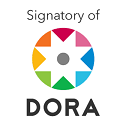Relationship between work fatigue and burnout syndrome in university teaching staff
Abstract
The aim of the study is to evaluate the connection between work fatigue and the development of burnout syndrome specifically in teachers at the Catholic University of Cuenca - Cañar Extension. The methodology adopted is descriptive and relational in scope. The dimensions of burnout syndrome were highlighted, including emotional exhaustion, depersonalization and lack of personal fulfilment. Assessment tools such as the Maslach Burnout Inventory (MBI) and specific variants were presented, along with theoretical models and scales for measuring job burnout. Recognizing the relationship between these phenomena is important for implementing preventive strategies and managing the health and well-being of teachers, highlighting the importance of adequate working conditions and early identification of symptoms.
Downloads
References
Caldwell, J. A., Caldwell, J. L., Thompson, L. A., y Lieberman, H. R. (2019). Fatigue and its management in the workplace. Neuroscience and biobehavioral reviews, 96, 272-289. https://doi.org/10.1016/j.neubiorev.2018.10.024
Makowiec, T., Gadzick, E., Siedlecka, J., Dania, M., Merecz, D., Viebig, P., Bortkiewicz, A. (2021). Agravantes en el trabajo y fatiga de los docentes. Medycyna Pracy, 283-303. https://doi.org/10.13075/mp.5893.01088
Manzano, A. (2020). Síndrome de burnout en docentes de una Unidad Educativa, Ecuador. Horizontes. Revista de Investigación en Ciencias de laEducación, 4(18), 499-511. https://doi.org/10.33996/revistahorizontes.v4i16.132
Posada, H., Molano, P., Parra, R., y Posada, J. (2020). Análisis de factores de riesgo y síntomas del síndrome de Burnout en docentes escolares colombianos bajo los estatutos 2277 y 1278 mediante interpretación del aprendizaje automático. Social Sciences, 9(3), 9-30. https://doi.org/10.3390/socsci9030030
Santa Cruz, E., Rojas, J., y Barboza, M. (2021). Síndrome de burnout en profesores de escuelas de países latinoamericanos. Archivos de Prevención de Riesgos Laborales, 24(3), 297-299. https://doi.org/10.12961/aprl.2021.24.03.05
Silva, L. P., Dos Santos, J. S. P., da Silva, L. L., Cezar, I. S., de Abreu, J. S. D., de Cerqueira, V. P., Reis, I. S., Santos, J. R., Costa, V. D. M., y Meira, C. S. (2021). Prevalence of burnout syndrome and associated factors in university professors working in Salvador, state of Bahia. Revista brasileira de medicina do trabalho : publicacao oficial da Associacao Nacional de Medicina do Trabalho-ANAMT, 19(2), 151-156. https://doi.org/10.47626/1679-4435-2020-548
Tito, P., Torres, M., y Perez, E. (2022). Predictores del síndrome de burnout en docentes universitarios: Un análisis factorial exploratorio. Enfermería Global revista electrónica trimestral de enfermería, 21(3), 50-65. https://doi.org/10.6018/eglobal.496901
Torres, E., El-Sahili, L., y Gutiérrez, V. (2019). Análisis del burnout y sus escalas de medición. Praxis Investigativa ReDIE: revista electrónica de la Red Durango de Investigadores Educativos, 11(20), 106-124. https://n9.cl/s5zsg
Vega, C., Ruíz, D., y Nava, C. (2019). Una propuesta de adaptación del cuestionario de síntomas de fatiga laboral. Revista de Psicología y Ciencias del comportamiento de la Unidad Académica de Ciencias Jurídicas y Sociales, 10(1), 74-86. https://doi.org/10.29059/rpcc.20190602-82
Copyright (c) 2024 María Esthela García-Avalos , Esteban Rodrigo Carrera-Álvarez , Álvaro Raúl Peralta-Beltrán

This work is licensed under a Creative Commons Attribution-NonCommercial-ShareAlike 4.0 International License.
CC BY-NC-SA : Esta licencia permite a los reutilizadores distribuir, remezclar, adaptar y construir sobre el material en cualquier medio o formato solo con fines no comerciales, y solo siempre y cuando se dé la atribución al creador. Si remezcla, adapta o construye sobre el material, debe licenciar el material modificado bajo términos idénticos.
URL de OAI-PMH: https://iieakoinonia.org/ojs3/index.php/gestioep/oai














